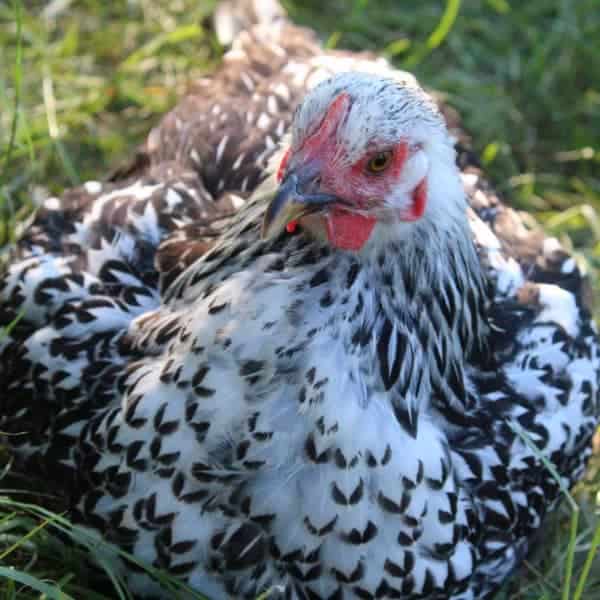From dogs that eat poop to dogs that won’t stop barking, there are all kinds of issues that you may have to deal with when you become a pet owner. However, if you’re looking for advice on how to stop a dog from attacking other pets, you may likely find that there are few ways to stop this behavior for good.
This is a very difficult topic to write about because there is not a one size fits all solution for dealing with aggression and aggressive behaviors in dogs. Unfortunately, for some individual dogs, there may not be a win-win solution either. The key here is trying to identify warning signs early in order to take immediate action before the behavior becomes too much of a habit.
Just like there will not be one solution that works for every dog or every situation of aggression in dogs, there is usually not just one miracle cure that will work to stop the behavior. A combination of training, medication, and avoidance will likely need to be implemented for best outcomes.
Table of Contents (Quickly Jump To Information)
What is Aggression?
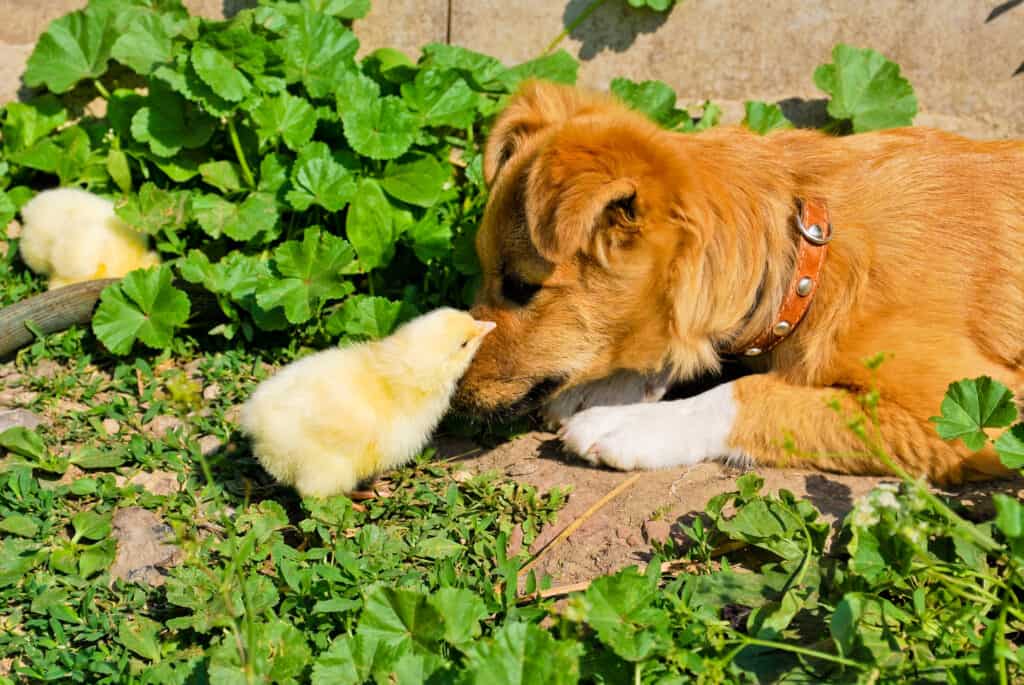
There are several types of canine aggression that dogs may display – and many potential reasons behind aggression in dogs, too.
Generally speaking, aggression in dogs refers to any undesired behavior that can be linked to an attack (or the threat of an attack). A dog might bare his teeth, snarl, grow, become rigid and still, and, if the aggression escalates, bite or nip.
Prevention of aggression, including aggression toward people along with any other form of aggression, such as toward other animals, is key. It is especially important for households that have children or any other pets or animals. If you’re reading this article, there’s a good chance that you want to keep your children and animals safe – so keep reading to learn how you can stop this type of behavior.
Can Aggression Be Cured?
If you have a dog that has been acting aggressively toward other pets, you might be wondering if he can ever be “cured” of these behaviors.
Fortunately, by taking certain steps, you can limit your dog’s aggression and often completely eliminate the harmful behaviors. There’s no guarantee that canine aggression toward other pets can ever completely, 100% be cured, though, so it’s always a good idea to limit a dog’s exposure to the people, animals, and situations that pique these behaviors.
Ultimately, you are responsible for your dog, so you need to make sure you limit risks by being aware of his tendencies – even if it’s been awhile since he acted out toward other animals.
Are Some Breeds More Aggressive Than Others?
While there’s nothing saying that your neighbor’s pit bull is going to be more aggressive than your little Pomeranian, the ASPCA reports that there are some breeds that are more likely to bite than others.
Why is that the case? For one, certain dog breeds have historically served specific functions for humans. While some were highly valued for their guarding and protective tendencies, others were lauded for their hunting prowess or fighting skills. As you might expect, dogs that were expected to fight will be more likely to display aggressive behaviors than others – though obviously, that is certainly not always the case.
What Causes Aggressive Behaviors?
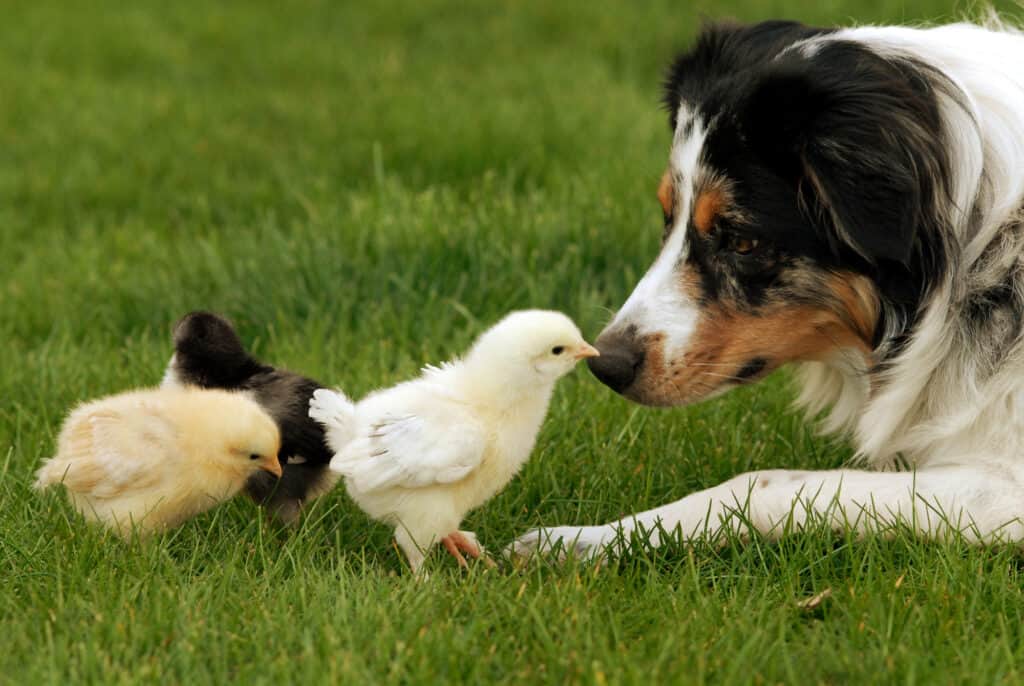
The first step toward stopping this aggression is figuring out why your dog is being aggressive in the first place. While inter-dog aggression is common, it’s not the only kind of aggression – some dogs become hostile toward other animals, like cats, or even toward inanimate objects, like vehicles.
Canine aggression can be categorized as territorial aggression, in which a dog defends your home or another space from what he views as an intruder.
There is also fear-based aggression, a type of reaction that a dog will exhibit when he senses that he is in danger and needs to defend himself. This is common in rescue animals as well as those that were neglected or not properly socialized as puppies.
Aggression can be purely environmental in its causes, too. A dog that is sick or injured is more likely to be aggressive, as is one that is being possessive. Possessive aggression in dogs is actually quite common and is sometimes referred to as “resource guarding.”
Occasionally, dogs may also behave violently when they are frustrated or trying to show dominance toward people or other animals.
Why Would My Dog Fight With Dogs He Has Never Met?
In many cases, dogs fight with their regular companions – perhaps pets he has been around his whole life. However, it is much more common for dogs to fight with new animals, typically those that they have never met before.
That’s because it’s normal for dogs to express a bit of fear in uncertain situations. The goal here is to recognize your dog’s body language that might be telling you he is uncomfortable. This can help you prevent aggressive behavior before it occurs.
Aggression between two or more unfamiliar dogs can be related to fear, poor communication, possessive behavior or resource guarding, defensive mechanisms, and territorial behaviors.
How to Stop a Dog from Attacking Other Pets: 5 Basic Tips
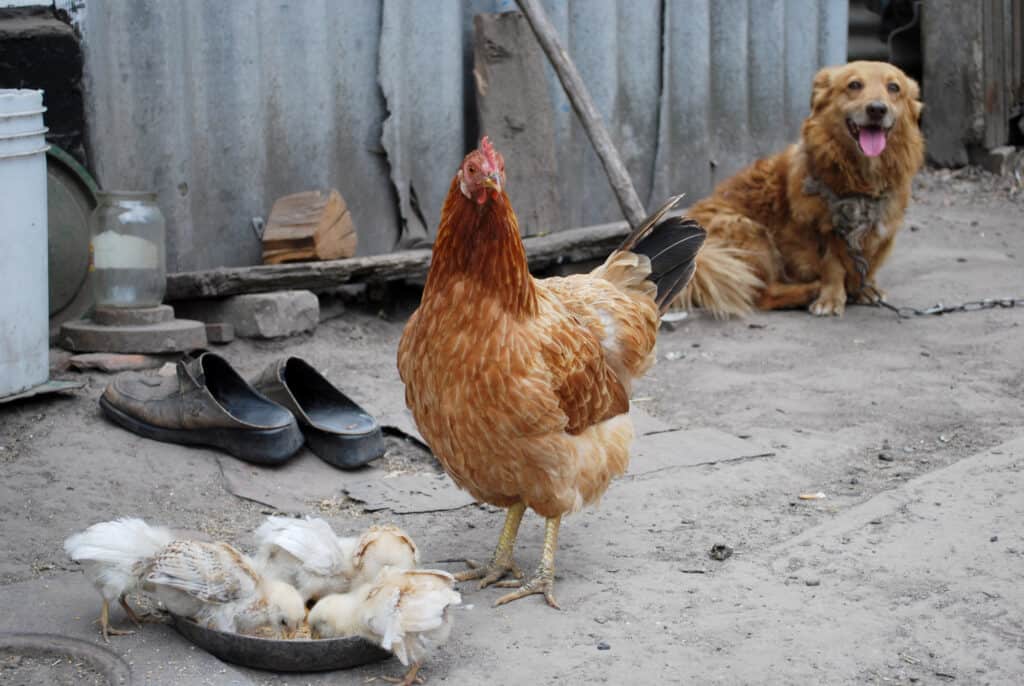
1. Work with your Veterinarian
If you notice your dog showing signs of aggression towards your other pets, the first thing you should do is schedule an appointment with your veterinarian. You can discuss the situation with your vet and they can examine your dog to make sure there is not a medical reason for the inter-dog aggression.
There are, in fact, some medical conditions that can make dogs behave more aggressively in the face of perceived threats. If a dog is in chronic low-grade pain, or if they anticipate pain, they can act more aggressive toward another pet. Although rare, it is possible for a dog to develop a brain tumor or even a tumor in their adrenal glands, causing them to become more aggressive and attack other pets.
Once medical conditions are ruled out, your vet can refer you to a positive reinforcement dog trainer or an animal behaviorist. This is extremely important because you will need to work on changing your dog or puppy’s behavior. Working with a professional who has the knowledge and experience is crucial.
2. Work with a Dog Trainer or Veterinary Behaviorist
Once your vet refers you to a dog trainer or veterinary behaviorist, make the call. A veterinary behaviorist is a veterinarian who has extensive training and knowledge in animal behavior. They also have the added benefit of being able to prescribe behavior-modifying medication.
It’s important to note that dogs aren’t the only animals that can behave aggressively. Animals of all species, including seemingly docile critters, like chickens, can have violent tendencies. Recognizing that this behavior is normal – albeit undesirable – is the first step in treating the issue.
If there is not a veterinary behaviorist near you or if their services are too expensive, a dog trainer will still be needed to treat the most extreme levels of aggression. Make sure they only use positive reinforcement in their training and not punishment. Punishment techniques will only make your dog’s behavior worse.
It is best if the trainer can come to your home to see how your dog or puppy behaves in their own environment and with the other pets around. Then they can work with you, your dog, and the other pets to find a workable solution.
By evaluating your dog, they should help you identify triggers that set your dog off and cause them to attack other pets. Is it just one pet in particular? Is it one action a pet does? Is it always during a particular time, such as feedings? Are there multiple triggers involved?
There are many things the trainer will need to help you narrow down to determine the underlying trigger for the aggression. Once that is determined, you and your trainer can work on ways to redirect the behavior before your dog has a chance to attack.
3. Medications
If your dog has high anxiety or the behavior of attacking other pets has become a habit, your dog will likely need to be started on prescription medications. The is because in order for your dog to learn how to respond to things in new ways, they need to be able to relax their brain.
The medications that can help with this are anti-anxiety and anti-depressive human medications. The most common ones used are Fluoxetine (Prozac) and Clomipramine. Every dog is different. One medication may work wonders in one dog, while have no effect in another. It can sometimes be a game of trial and error.
These particular medications need to be given to your dog or puppy for at least 2-3 months for you to know if they are helping. They need to build up in your dog’s system over the course of 1 month before they start working.
Your vet will also want to check bloodwork before starting one of these medications to make sure your dog’s organs are functioning properly.
4. Avoidance
If you know what the trigger is that causes your dog to attack other dogs, try to avoid it if at all possible. It is best to just not put your dog into that situation. This may also mean that you keep certain pets at a distance away from your dog. You just do not let them interact in any way. You may need to give them separate living spaces (note – if you use an outdoor dog house, it’s important to keep it warm in the winter and cool in the summer!) and separate feeding times.
It is understandable that not all situations are avoidable – you can’t always keep your dog at a distance. This is where your training comes in handy. It is very important to be able to redirect your dog’s attention to focus on you if they are in a negative situation.
5. Basic Obedience Training
Work on basic obedience and commands that make it impossible for your dog to do the negative behavior in the heat of the moment. For instance, train your dog to lie down and roll over with very specific words and hand motions that your dog can easily understand in any situation. If you notice them about to attack, do the command. They cannot attack when lying down, especially not when lying on their back.
Have high value treats at your fingertips so you can reward your dog when they do redirect their attention and focus on you, doing the command. This will work to reinforce their good behavior.
Alleviating boredom is another way you can help prevent your dog from attacking other pets. Here’s a good tip from the I Love Backyard Chickens Facebook page:
Give the dog a job. Be consistent. Obedience training first. I have a catahoula I got from the pound at 8 months old. He wanted to chase and get them at first. I tied his lead to my hip everyday while I did farm chores. Then after a few weeks he was free to do chores off lead. Then I taught him to protect my chickens, cattle and sheep from coyotes, cats, possum, raccoons etc. then I taught him to watch the sky for predators. He will not let a predatory bird land on our 6 acres. He chases from the ground not allowing them to land. Now he no longer needs cues it’s his job. He always gets corrected in a stern voice when doing wrong and always praised in cheerful voice when doing good. Consistent training and always praising as well as reprimand when needed. Dogs are happy to have a job. I try teach him something new every month. He helps with the cattle now too.
Charlotte Carter
You can also train your dog to focus better, which can also help you control him more easily when he is being aggressive around other animals. To do this, start by making a sound, like a smacking noise. Put a treat at eye level and give your dog the treat when he looks at you. You may need to do this a few times.
6. Monitor Closely
Sometimes, the case may not be that your dog has already displayed aggression toward another pet but that you are worried about him attacking new additions to your home or homestead. In that case, early exposure while monitoring both parties closely is essential. Be a good babysitter!
As Lauren Marsland writes on the I Love Backyard Chickens Facebook page:
Desensitization [sic]. Expose both animals to each other as much as possible. But if there even a tiny risk, always monitor your animals together and if you aren’t there to monitor them, don’t leave them together.
Lauren Marsland
7. Provide Boundaries
Another thing that can be helpful is to keep your dog at a controlled distance from other animals. If he must be in the same vicinity as other animals and you know that he is going to behave aggressively, consider using a leash, kennel, cage, fence, or muzzle. Although this is certainly not ideal, it may be necessary if you know that you cannot trust your dog around other animals.
Stay Safe While Teaching Your Dog to Be Kind
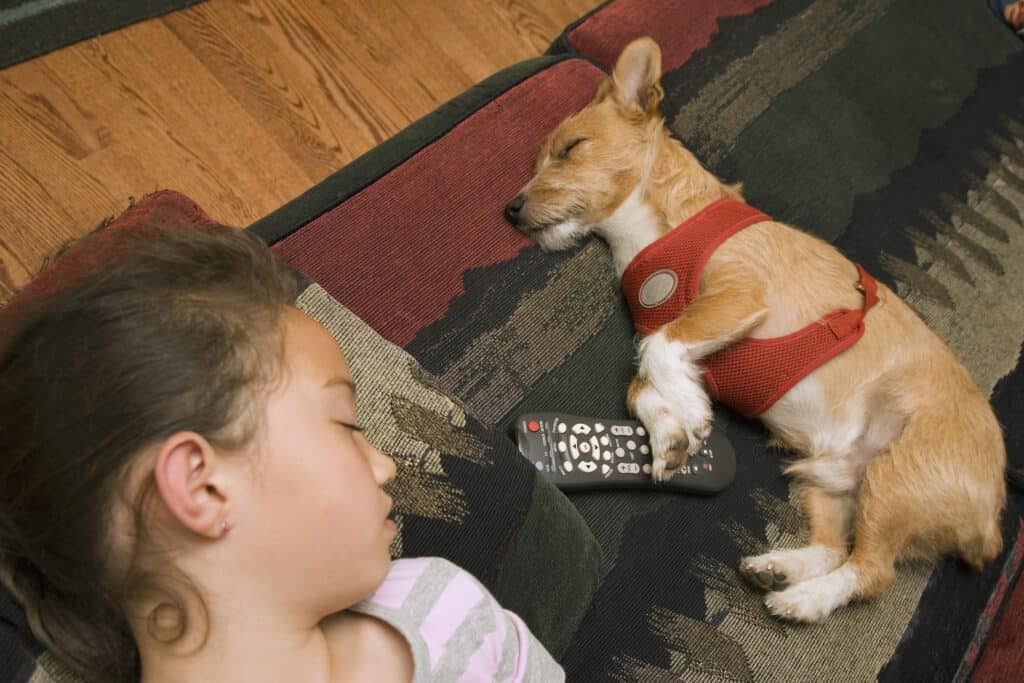
Never get in the middle of a dog fight. If your dog attacks another pet, do NOT put your hands or arms in between them as this only ensures that you will get bit. Your dog will not realize they are hurting you if they are in attack mode, even if they are on a leash.
Something else that’s important to remember? If you’re aggressive, there’s a good chance that your dog will be, too. Try to stay calm whenever your dog is acting aggressive. This may help keep everyone safe and limit aggressive behaviors as well.
Trying to distract your dog with a really loud sound or by pouring lukewarm water on them may work. But, never put yourself in the middle of it.
Related Articles
- Why Does My Dog Eat Poop?
- Does My Pet Have Allergies?
- How to Keep a Pet From Wiggling When Giving Medicine
- How Often Should You Bring Your Pet to the Vet?
Leslie Brooks graduated from the University of Tennessee College of Veterinary Medicine in 2012. After graduation she did a one-year intensive rotating clinical internship, with rotations in various specialties. She has been working in small animal clinical medicine ever since and ran her own house call practice for three years. She currently lives in Indiana with her husband, son, and cat named Callie. She spends much of her free time volunteering in the community, from Meals on Wheels to working with pets of the homeless and vulnerable. She also loves to travel and read.

![How to Help A Wounded Chicken [Video Tutorial]](https://thefrugalchicken.com/wp-content/uploads/2016/12/how-to-help-a-wounded-chicken.jpg)

![Essential Oil Coop Sprays for Healthier Backyard Chickens [Podcast]](https://thefrugalchicken.com/wp-content/uploads/2017/01/essential-oil-coop-sprays.jpg)

![10 Chicken Facts That’ll Amaze You! [Podcast]](https://thefrugalchicken.com/wp-content/uploads/2016/02/chicken-facts-feature-min.jpg)
